There is also the pardalus. As a rule, it is seen in flocks and not singly; it is ashen-coloured all over, and about the size of the birds last described; it is fleet of foot and strong of wing, and its pipe is loud and high-pitched. The collyrion (or fieldfare)feeds on the same food as the owsel; is of the same size as the above mentioned birds; and is trapped usually in the winter. All these birds are found at all times. Further, there are the birds that live as a rule in towns, the raven and the crow. These also are visible at all seasons, never shift their place of abode, and never go into winter quarters.
24
Of daws there are three species. One is the chough; it is as large as the crow, but has a red beak. There is another, called the 'wolf'; and further there is the little daw, called the 'railer'.
There is another kind of daw found in Lybia and Phrygia, which is web-footed.
25
Of larks there are two kinds. One lives on the ground and has a crest on its head; the other is gregarious, and not sporadic like the first; it is, however, of the same coloured plumage, but is smaller, and has no crest; it is an article of human food.
26
The woodcock is caught with nets in gardens. It is about the size of a barn-door hen; it has a long beak, and in plumage is like the francolin-partridge. It runs quickly, and is pretty easily domesticated. The starling is speckled; it is of the same size as the owsel.
27
Of the Egyptian ibis there are two kinds, the white and the black.
The white ones are found over Egypt, excepting in Pelusium; the black ones are found in Pelusium, and nowhere else in Egypt.
28
Of the little horned owls there are two kinds, and one is visible at all seasons, and for that reason has the nickname of 'all-the-year-round owl'; it is not sufficiently palatable to come to table; another species makes its appearance sometimes in the autumn, is seen for a single day or at the most for two days, and is regarded as a table delicacy; it scarcely differs from the first species save only in being fatter; it has no note, but the other species has. With regard to their origin, nothing is known from ocular observation; the only fact known for certain is that they are first seen when a west wind is blowing.
29
The cuckoo, as has been said elsewhere, makes no nest, but deposits its eggs in an alien nest, generally in the nest of the ring-dove, or on the ground in the nest of the hypolais or lark, or on a tree in the nest of the green linnet. it lays only one egg and does not hatch it itself, but the mother-bird in whose nest it has deposited it hatches and rears it; and, as they say, this mother bird, when the young cuckoo has grown big, thrusts her own brood out of the nest and lets them perish; others say that this mother-bird kills her own brood and gives them to the alien to devour, despising her own young owing to the beauty of the cuckoo. Personal observers agree in telling most of these stories, but are not in agreement as to the instruction of the young. Some say that the mother-cuckoo comes and devours the brood of the rearing mother; others say that the young cuckoo from its superior size snaps up the food brought before the smaller brood have a chance, and that in consequence the smaller brood die of hunger; others say that, by its superior strength, it actually kills the other ones whilst it is being reared up with them. The cuckoo shows great sagacity in the disposal of its progeny; the fact is, the mother cuckoo is quite conscious of her own cowardice and of the fact that she could never help her young one in an emergency, and so, for the security of the young one, she makes of him a supposititious child in an alien nest. The truth is, this bird is pre-eminent among birds in the way of cowardice; it allows itself to be pecked at by little birds, and flies away from their attacks.
30
It has already been stated that the footless bird, which some term the cypselus, resembles the swallow; indeed, it is not easy to distinguish between the two birds, excepting in the fact that the cypselus has feathers on the shank. These birds rear their young in long cells made of mud, and furnished with a hole just big enough for entry and exit; they build under cover of some roofing-under a rock or in a cavern-for protection against animals and men.
The so-called goat-sucker lives on mountains; it is a little larger than the owsel, and less than the cuckoo; it lays two eggs, or three at the most, and is of a sluggish disposition. It flies up to the she-goat and sucks its milk, from which habit it derives its name;it is said that, after it has sucked the teat of the animal, the teat dries up and the animal goes blind. It is dim-sighted in the day-time, but sees well enough by night.
31
In narrow circumscribed districts where the food would be insufficient for more birds than two, ravens are only found in isolated pairs; when their young are old enough to fly, the parent couple first eject them from the nest, and by and by chase them from the neighbourhood. The raven lays four or five eggs. About the time when the mercenaries under Medius were slaughtered at Pharsalus, the districts about Athens and the Peloponnese were left destitute of ravens, from which it would appear that these birds have some means of intercommunicating with one another.
32















